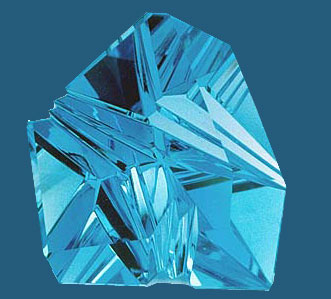Aquamarine - PRECIOUS STONE
Description
 What is Aquamarine?
What is Aquamarine?
Aquamarine is one of the most admired and very famous gemstones, and differentiates itself by a lot of first-rate qualities. Aquamarine is the combination of beryllium, aluminum, and silicate. Aquamarine is termed for the Latin phrase "water of the sea". It is approximately as accepted as the classics: ruby, sapphire and emerald. In reality it is connected to the emerald, both fit in to the beryl family.
Where do they form?Indigenous rocks make possible the expansion environment for aquamarine formation. The dimension of the crystal is in relation to the cooling rate. Huge crystals are produced while the cooling is very sluggish. These gemstones get shaped in nature under precise aggressive geologic conditions. When the mineral-rich aggressive magma flowed under into the rock layers of mountain range. As it gets chilled, the magma fluid gets intent in to cavities of mineral-saturated fluid that gets heated to a very elevated temperature 1,112° F.
Composition:- VARIETY OF: Beryl, Be3 Al2 Si6 O18.
- CLEAVAGE: one direction, poor.
- CRYSTAL SYSTEM: hexagonal
- Pleochroic: weak
- BIRTHSTONE FOR: March
- COLOR: various shades of blue to blue-green.
- INDEX OF REFRACTION: 1.57 - 1.60
- BIREFRINGENCE: 0.004 - 0.008
- HARDNESS: 7.5 - 8
Physical Properties :
The chemical method for aquamarine, along with all other beryls, is Be3Al2(SiO3)6. The color of the stone comes from trace amounts of iron which have become embedded in the hexagonal crystalline formation of the stone. According to nautical lore, aquamarine could make sure safe passage for sailors, and many wore the stone on their bodies or slept with an aquamarine under the pillow for peaceful sleep. Sailors also thought that mermaids had tails made of aquamarine. In the Middle Ages, many people felt that the stone had health ornate properties, and some carried it to protect themselves from poison.
The stone can be almost clear to rich blue in color, and it is sometimes heat treated to improve the color. Because of the clear, shining look of aquamarine, it is usually presented in a faceted cut, so that the faces of the stone jazz in the light. Caring for aquamarine is fairly easy, because the stone is hard and difficult to crack. It can be washed with a soft soap and water solution, and even brushed with a toothbrush if it starts to collect grime and dust. Be careful when choosing a detergent, as some detergents may respond with the metal the stone is set in, and keep aquamarine out of the heat, as this may damage the stone. The stone should maintain a suitable oil and humidity balance by being worn next to the skin, even though avoid wearing aquamarine if you have an active day planned, as the stone can crack or chip if slammed against incredible.
Color:Stones with an obvious blue color - with no green or gray - are in general the large amount precious. Despite the reality that approximately all gemstones have some level of blemishes, the uppermost quality Aquamarine is clear, with no inner flaws or outer flaw.
Cut:A good quality cut shows an Aquamarine's deepness of color and vivacity while enlightening the smallest amount of imperfections. Cut is very significant for setting the worth of whichever gem stone. Then the faceting (the angle at which light reflect) is as well extremely vital for the appearance of the stone.
Clarity:The premier quality aquamarine is translucent& clear; its shade varies from near colorless to the sea green and blue skies. Make sure for any blemish in the stone. Confirm the gem do not contain any chip or scuffs.
Carat:In aquamarines, huge gems are generally used for crafting pendants. Carat, or the measure of the dimension of the gem, is what make it additional precious. Hence, the larger the aquamarine, the further costly it will be. All in all, keep in mind that the color, cut, clarity and carat decide the quality as well as the worth of the aquamarine.
Natural Occurrence :
Brazil, Pakistan, Myanmar, Russia, China, Namibia, Mozambique, Zambia, Kenya, United States (Colorado and California), India, Siberia, Srilanka.
Available Colors :
Colorless, Blue, Green, yellow, faint light blue, bluish Green.








